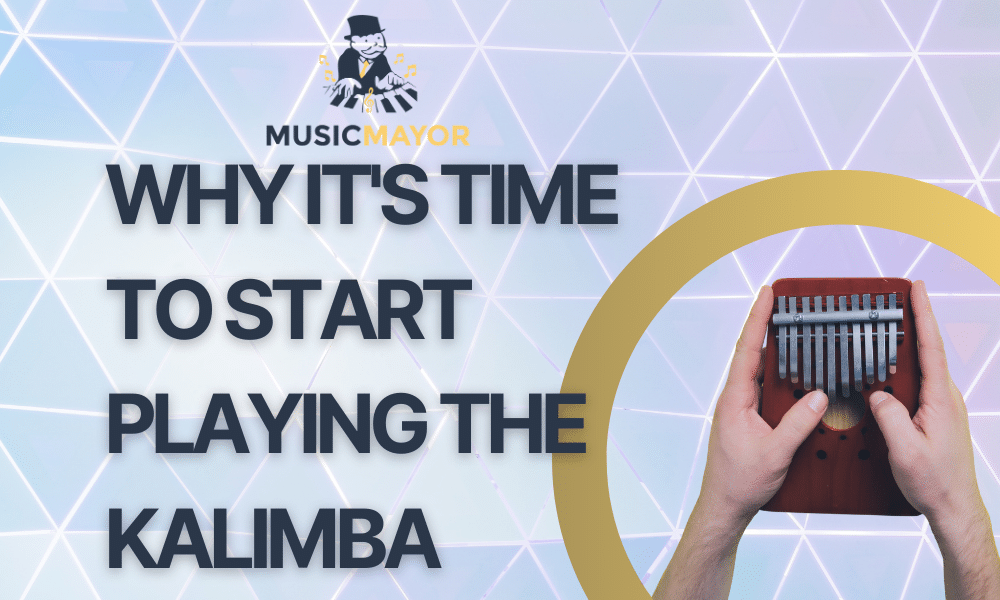Deciding to learn to play the Kalimba can be one of the best decisions of your life. Take a look at what a Kalimba is and why it’s time to learn.
What is a Kalimba?
The kalimba is an African thumb piano. Based on many different instruments from across Africa, all part of the Mbira idiophone family. A Kalimba is played with the metal tines, and sometimes the resonator box.
Kalimba Origin and History?
The Kalimba design came to the West and the rest of the world, outside of Africa, as a unique amalgamation of different musical instruments. Its creation came from an ethnomusicologist called Hugh Tracey.
Hugh Tracy moved to South Africa in 1920. He taught all over Africa, recording traditional African music from different areas to preserve the music before radio influence.
Popular music, globalization, as we would know it today, would eventually take hold and start to distort the traditional cultural music of Africa.
Hugh started the international library of African music. The goal was to create a history and background record of what music and its diversity were like before globalization struck.
The kalimba still represents a similar instrument to the one Hugh developed back then. The metal tines and resin box.
Today there are some variations of the kalimba. For example, some Kalimba variations included a hollowed resonator box with a sand hole. While, some versions are a solid piece of wood, giving it a different tambour.
Is the kalimba challenging to learn?
If you are familiar with playing instruments and reading music, you can learn quite a lot in a week. It’s not a difficult instrument to play. You can quickly learn essential tunes in a week.
It will take more time for more complex songs, especially when it involves rapid playing or playing several times at once. I guess it’s like learning any other instrument.
I found it similar to learning how to play the piano. It’s easier than, for example, a clarinet as the kalimba only requires your hands to play.
How to Play the Kalimba | Tutorial for Beginners
Interested in getting a new instrument? How...
Pick up a Kalimba Song Book and learn Kalimba tabs and sheet music quickly.
The Most Comprehensive Compilation of Popular Songs For 17-Key Kalimba (35 Songs With Play-Along Videos)
7 used from $3.86 Features
Is Adult Product
Language English
Number Of Pages 134
Publication Date 2020-04-14T00:00:01Z
Choosing a Kalimba Tuning
Kalimba’s come in different tunings. Most beginner Kalimbas comes with a key of C tuning.
If you are buying a kalimba for your first time, be sure it is in the key of C as this is most common and will be easiest to learn on.
The original Kalimbas Hugh Tracey used were tuned in the key of G.
The key of C tuning means they are diatonic. They contain no chromatic notes, which is no sharps or flux. You’ve just got A through G. They go alternating up. Switching from side to side as it goes up.
While it is called the thumb piano, switching from side to side is one of the primary differences from a traditional piano layout.
What do Kalimba Colored Bars mean?
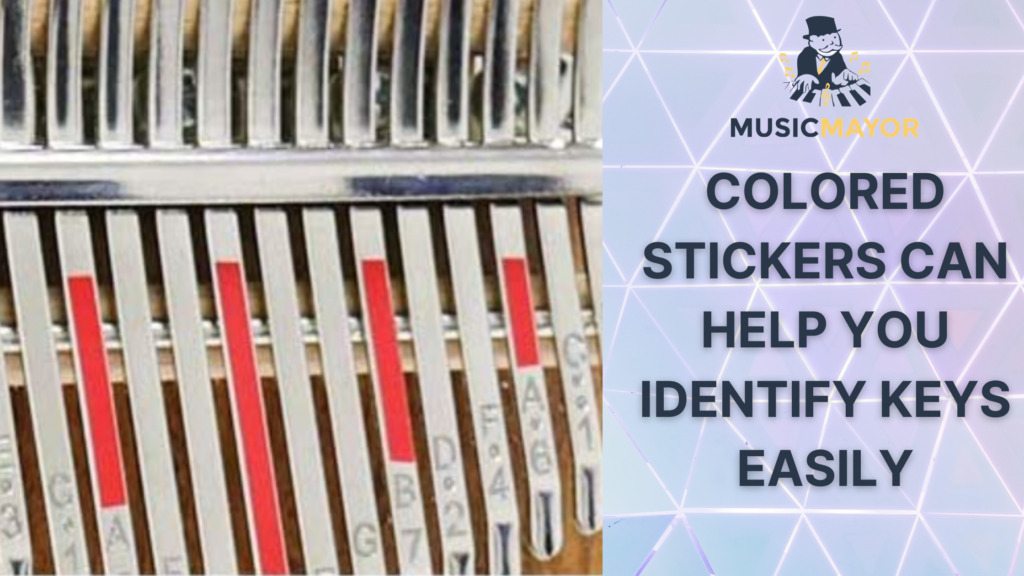
The colored bars on some of the tines represent colored bars on the kalimba tab notation. They are purely there to help you read kalimba tablature. If you’re not trying to look at tab notation, you don’t particularly need the colored bars.
While the colored bars may seem like the black notes on a piano, there is no correlation. Some may find this confusing if they are used to playing a traditional piano.
What is a Kalimba tuning hammer?
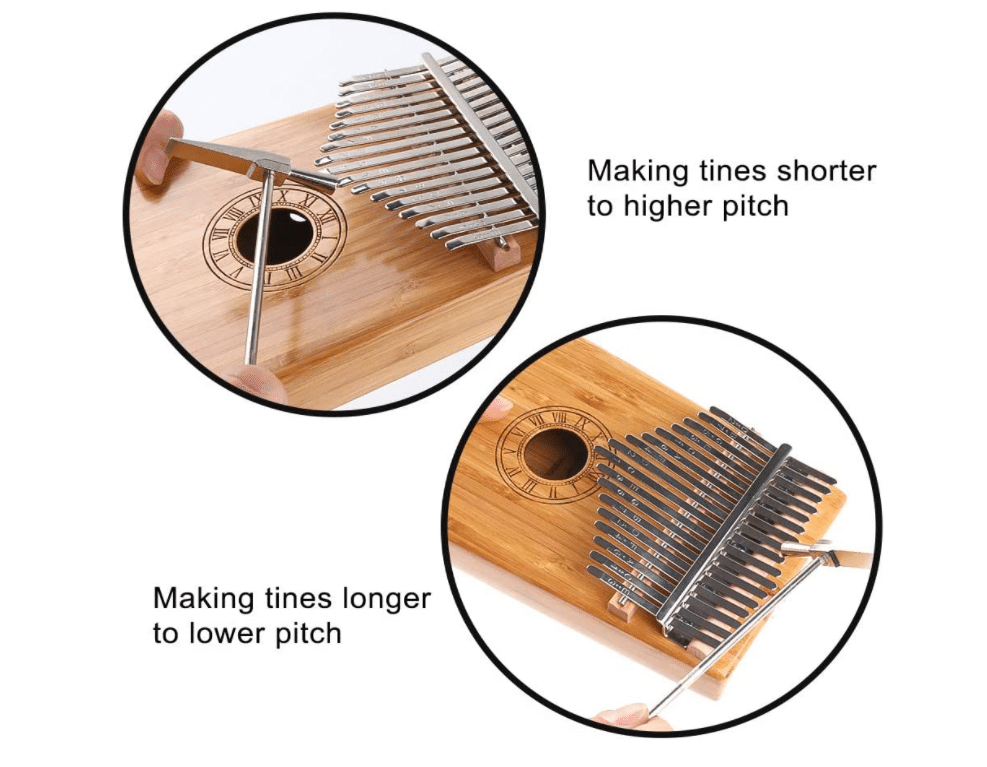
When you purchase your kalimba, you would also get a little tuning hammer. The purpose of the tuning hammer is to tune your kalimba and make sure that it stays in tune as you play it.
The best way to get your kalimba in tune is to use a Tuner app. Essentially your phone will listen to the note and give you a chromatic tuning guide. The apps have made this complicated process relatively simple.
Suppose you want to make the pitch slightly higher. Then you knock the tine from underneath to shorten the length of the time. And if you’re going to make the pitch marginally lower, you strike from above to lengthen the time.
By shortening and lengthening the tines, you’d changed the tuning slightly. So if one of yours is somewhat flat or somewhat sharp, that’s how you would correct it with your little tuning hammer. You don’t need to know music theory to start playing some fun Kalimba songs!
What are electric kalimbas?
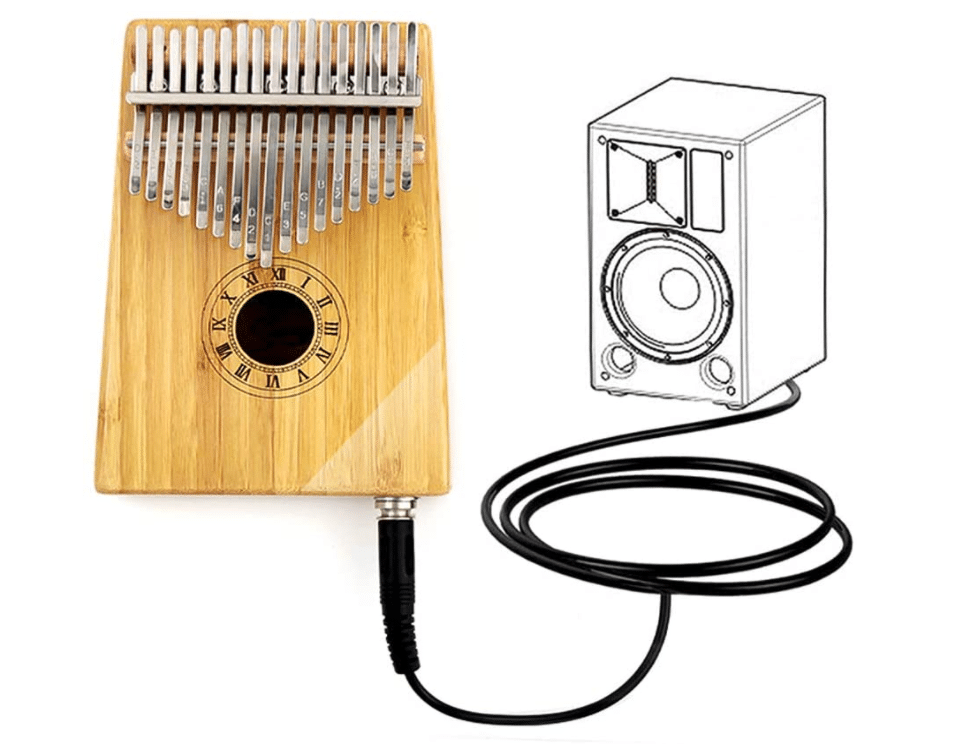
Modern kalimbas can come with an electric pickup which allows you to plug into an amplifier.
Electric pickups are particularly helpful if you are playing at an open mic night or gig and making the sound louder for the large space or crowd.
You can also apply effects similar to how you would on a guitar or any other instrument. You’d plug into an amplifier. You can give more body to your kalimba’s sound by adding reverb and delay and things like that.
Suppose you have an acoustic kalimba without an electric pickup. The sound will be dependent upon how resonant the material is.
How to hold kalimba
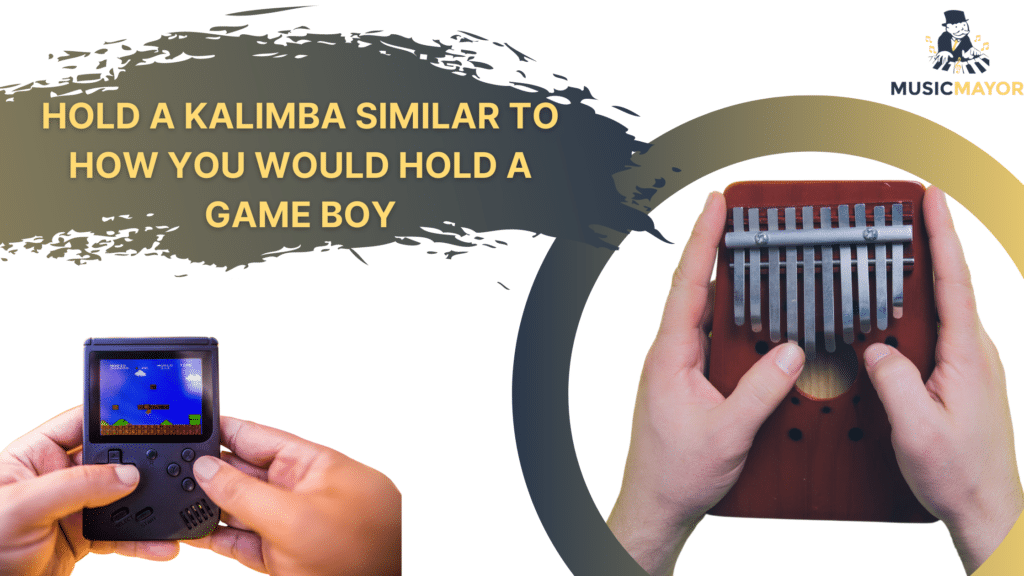
Kalimbas with a soundhole, you will hold similar to how you would control a game boy. So you have a finger bracing on either side, and you’re on the tines.
I prefer to hold at the bottom to provide a little extra dexterity to stroke and pluck the tines.
If you have a solid box on your kalimba, you will place the solid box down onto a surface, and you would play it from above.
Placing on a solid surface will give you the resonance through the body, which will create the sound and help the sound waves to carry.
Alternatively, if you’ve got a solid body kalimba, you can hold it next to a microphone and pick up just the airways resonance of the actual tines themselves.
So there are alternate ways to play it, but the most straightforward way to play is probably to get a resonant box with a hole for your kalimba so that you can hold it in your hands and play it.
Still, debating on whether you should learn to play the kalimba? Here are my top 10 reasons it’s time to learn the kalimba!
- It’s Portable
One of the things that’s great about it is that it’s very portable. So you can take it anywhere. You can practice and play just about anywhere.If you have a car full of gear or going on a road trip, you may not want to bring a different instrument, but a kalimba will squeeze nicely into a backpack or carry it yourself with you. - Playing Kalimba in a Group is a blast
One of my favorite times playing the kalimba is in group settings. You can improvise over the top of a set of chords or music played by other group members in the key of C.What’s great about this is just about any melody that you pick out will sound great over the cords of C’s key. - See Music Differently
Playing kalimba will allow you to hear and understand music in a differently from other instruments. The unique note layout of the kalimba requires that you know it physically almost more than you do mentally.You learn what sort of thumb dancing and rhythms you need to play to accomplish a particular song. Uniquely, playing kalimba puts your consciousness into your body. - It’s “easy” to play complex music
It is relatively easy to make reasonably complex music on the kalimba. Notes are arranged on kalimbas to help you play melody lines and make it easy to accompany melody through chords, arpeggios, or even counterpoint. - Playing the kalimba can be a form of meditation
You’ve likely heard the kalimba played in the background of many meditation soundtracks. I find it a way to relax and be mindful, even when I’m playing myself. It just has a relaxing tune. Even when hitting a few wrong notes, it’s not like the screech of a saxophone that is, well, let’s say not very calming at all when missing a tune. - Kalimba costs are inexpensive
Sometimes, it’s not easy to buy any instrument — depending on what you’re interested in — because of their price. A kalimba can be as cheap as $10 to order online — and a tremendous gig-worthy kalimba may only set you back $50. - IT’S GREAT FOR BEGINNERS
The standard kalimba only has about 17 keys on it, and you just need your thumbs to play it. Want to learn your favorite song? There’s likely a YouTube video for that.There are plenty of free how to play kalimba guides on YouTube and other apps.
So what are you waiting for! It’s kalimba time!

